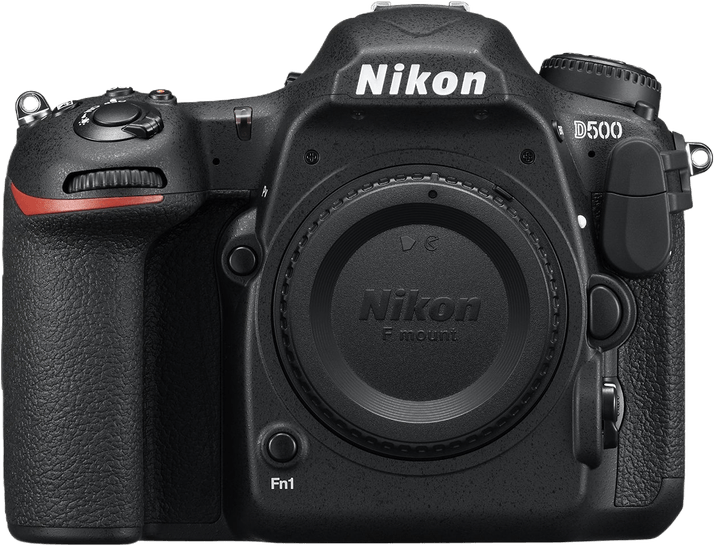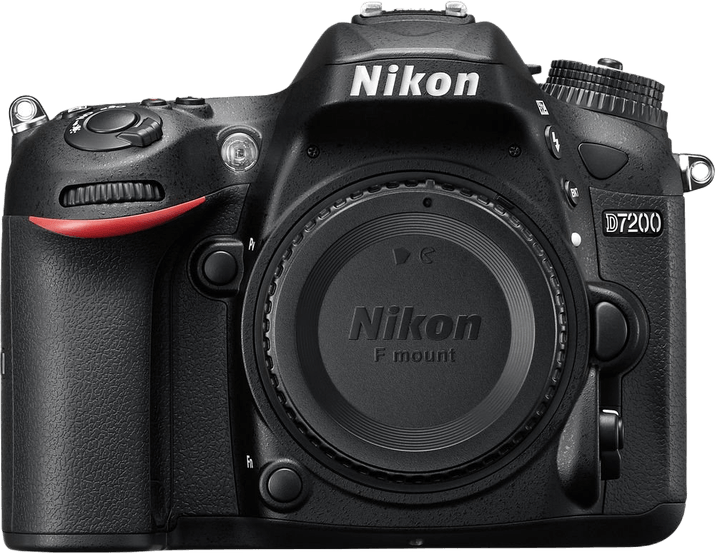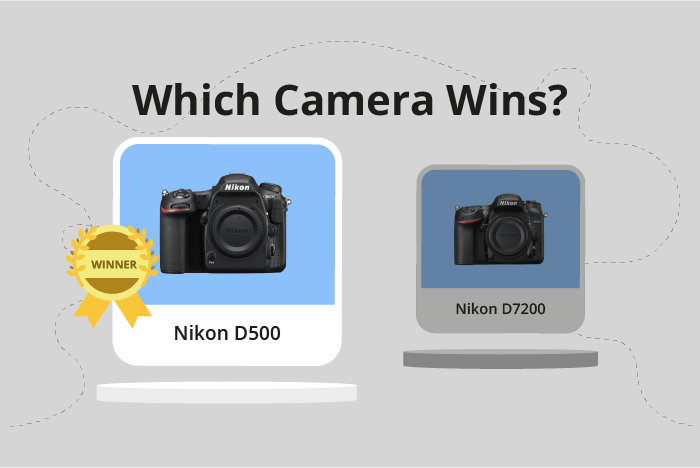Nikon D500 vs D7200 Comparison
Nikon D500

Nikon D7200

The Nikon D500 emerges as the winner with a score of 75/100, while the Nikon D7200 trails behind at 68/100. Both cameras are DSLRs and were released in 2016 and 2015, respectively. They share similarities in camera type and dimensions, with the D500 being slightly larger at 147 x 115 x 81mm and heavier at 860g compared to the D7200’s 136 x 107 x 76mm and 765g.
The D500’s higher score is justified by its superior performance and features, but it comes with a higher launch price of $2000, compared to the D7200’s $1200. On the other hand, the D7200’s advantage lies in its smaller size and lighter weight, making it more portable.
Taking these points into consideration, the Nikon D500 stands out as the better option for those seeking top-notch performance and features, while the Nikon D7200 offers a more budget-friendly and portable alternative.
Nikon D500 vs D7200 Overview and Optics
The Nikon D7200 outperforms the Nikon D500 in optics, scoring 71/100 compared to the D500’s 69/100. Both cameras share some common specifications, such as the CMOS sensor type, APS-C sensor size, Nikon F DX lens mount, and lack of image stabilization. However, there are some key differences that set them apart.
The Nikon D500 has 20.9 megapixels and a shooting speed of 10 frames per second, making it better for capturing fast-paced action. Its Expeed 5 processor enables faster processing of images, ensuring that the camera works efficiently. However, the D500’s DXOMARK score for the sensor is 84, which is slightly lower than the D7200’s score.
On the other hand, the Nikon D7200 has a higher resolution with 24.2 megapixels, allowing for more detailed images. Its DXOMARK score for the sensor is 87, indicating better overall image quality. Nevertheless, the D7200’s shooting speed is only 6 frames per second, which is slower than the D500. Additionally, the D7200 uses an older Expeed 4 processor, which may affect its performance compared to the D500.
In terms of optics, the Nikon D7200 is the winner due to its higher resolution and better DXOMARK sensor score. However, the Nikon D500 should not be overlooked, as its faster shooting speed and more advanced processor make it a strong contender for action photography. Ultimately, the choice between these two cameras will depend on individual preferences and the specific needs of the photographer.
Nikon D500 vs D7200 Video Performance
When comparing the Nikon D500 and the Nikon D7200, both cameras achieve a video score of 70/100. This means that their video capabilities are equally competent, with each camera offering distinct advantages in different aspects. Both cameras feature time-lapse functionality built-in, allowing users to create stunning time-lapse videos with ease.
The Nikon D500 excels in its maximum video resolution, offering 4K video recording at 3840 x 2160 pixels. This is a significant advantage over the Nikon D7200, which only supports Full HD video recording at 1920 x 1080 pixels. The higher resolution offered by the D500 allows for more detailed and sharper videos, making it an ideal choice for those who prioritize video quality.
On the other hand, the Nikon D7200 has a higher maximum video frame rate of 60fps, compared to the D500’s 30fps. This means that the D7200 is capable of capturing smoother video, especially in fast-paced or action scenes. Users who value fluid motion and the ability to create slow-motion footage will find the D7200 more suitable for their needs.
Taking these factors into account, the Nikon D500 is the better choice for those seeking higher video resolution, while the Nikon D7200 is more appropriate for those who prioritize a higher frame rate for smooth video capture. Both cameras are strong contenders in the video department, and the choice ultimately depends on the user’s specific requirements and preferences.
Nikon D500 vs D7200 Features and Benefits
The Nikon D500 outperforms the Nikon D7200 in features, earning a score of 87/100 compared to the D7200’s 59/100. Both cameras share some common specifications, such as a 3.2-inch screen size and the lack of GPS. Additionally, both models offer WIFI connectivity, allowing for seamless photo sharing and remote camera control.
The Nikon D500 excels in several areas, making it the better camera in terms of features. Firstly, its screen resolution is significantly higher at 2,359,000 dots, compared to the D7200’s 1,228,800 dots. This results in a sharper and more detailed display for better image review and composition. Furthermore, the D500 has a touchscreen, which simplifies menu navigation and enables touch focus and shutter control. The D500 also features a flip screen, providing flexibility for shooting from various angles and facilitating self-portraits. Lastly, the inclusion of Bluetooth technology in the D500 enhances connectivity options and allows for easier pairing with compatible devices.
On the other hand, the Nikon D7200 has fewer advantages over the D500. Its only notable strength is its lower price point, making it a more budget-friendly option for photographers who may not require the additional features offered by the D500.
In comparing the Nikon D500 and D7200, it is evident that the D500 is the superior camera in terms of features. Its higher screen resolution, touchscreen functionality, flip screen, and Bluetooth connectivity make it a more versatile and user-friendly option. While the D7200 may appeal to those on a tighter budget, the D500’s advanced features justify its higher score and make it the better choice for photographers seeking a camera with more capabilities.
Nikon D500 vs D7200 Storage and Battery
The Nikon D500 and Nikon D7200 both score 79/100 in storage and battery, showing that they are quite similar in this aspect. They share common specifications such as having two memory card slots and accepting SD, SDHC, and SDXC memory cards. Both cameras also use the EN-EL15 battery type and do not have USB charging capabilities.
The D500 has an edge over the D7200 in terms of battery life, offering 1240 shots compared to the D7200’s 1110 shots. This longer battery life allows for more shooting time before needing to replace or recharge the battery. Additionally, the D500 supports UHS-II compatible cards and XQD cards, providing faster data transfer and larger storage capacity options.
However, the D7200 still performs well with its 1110-shot battery life, which is sufficient for most photography needs. Its memory card compatibility, while not as extensive as the D500, covers the widely-used SD, SDHC, and SDXC cards, making it a practical choice for storage.
Both cameras have their strengths in storage and battery, with the D500 having a slightly superior battery life and broader memory card compatibility. Meanwhile, the D7200 maintains a respectable performance in these areas, remaining a viable option for photographers.
Alternatives to the Nikon D500 and D7200
Are you still undecided about which camera is right for you? Have a look at these popular comparisons that feature the Nikon D500 or the Nikon D7200:

